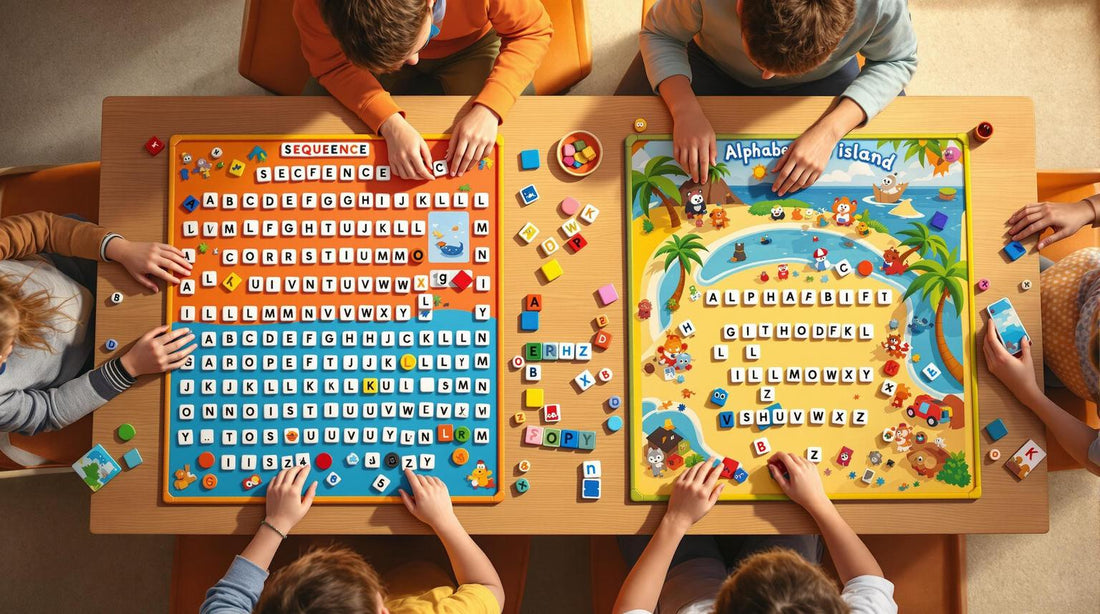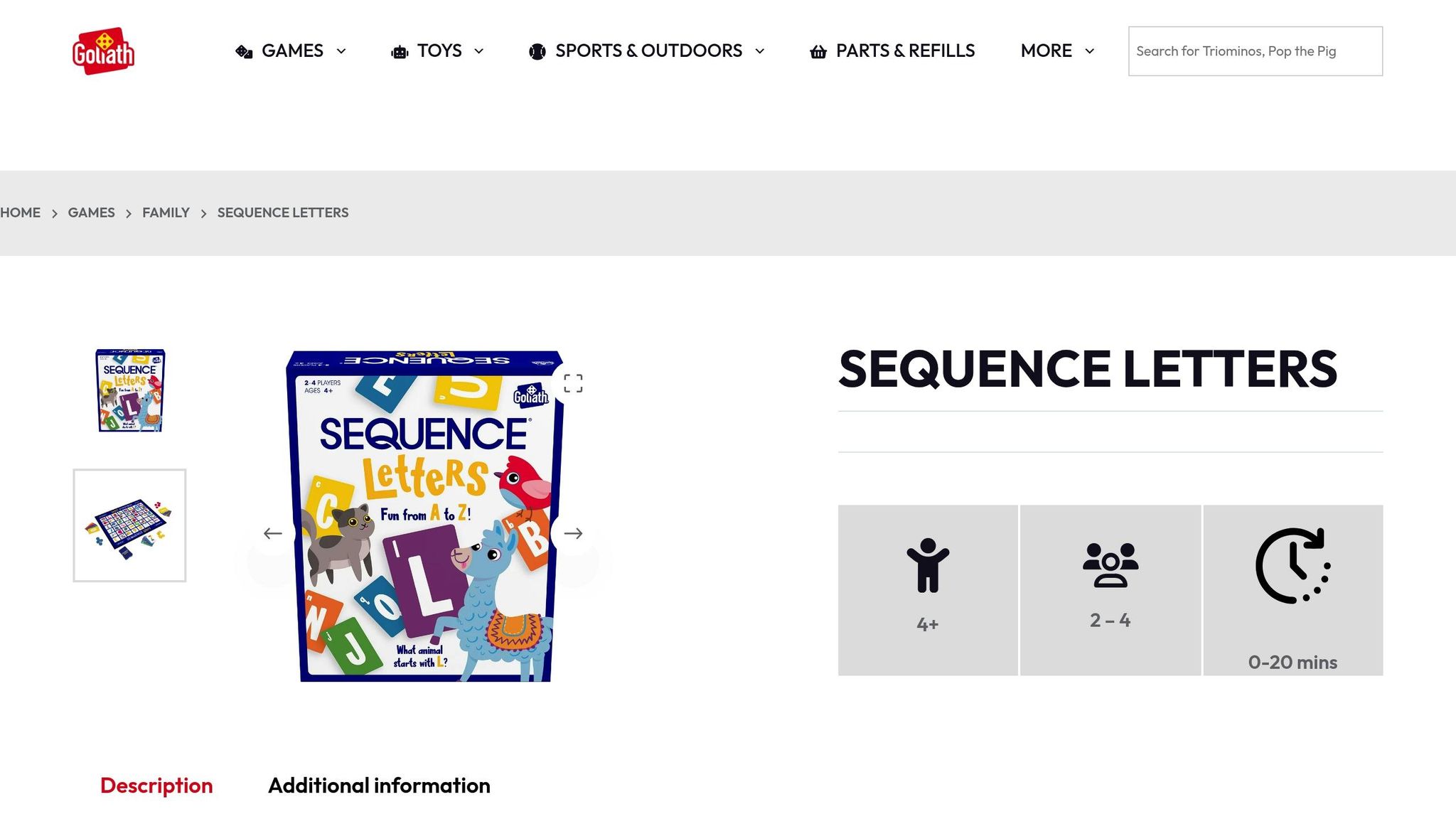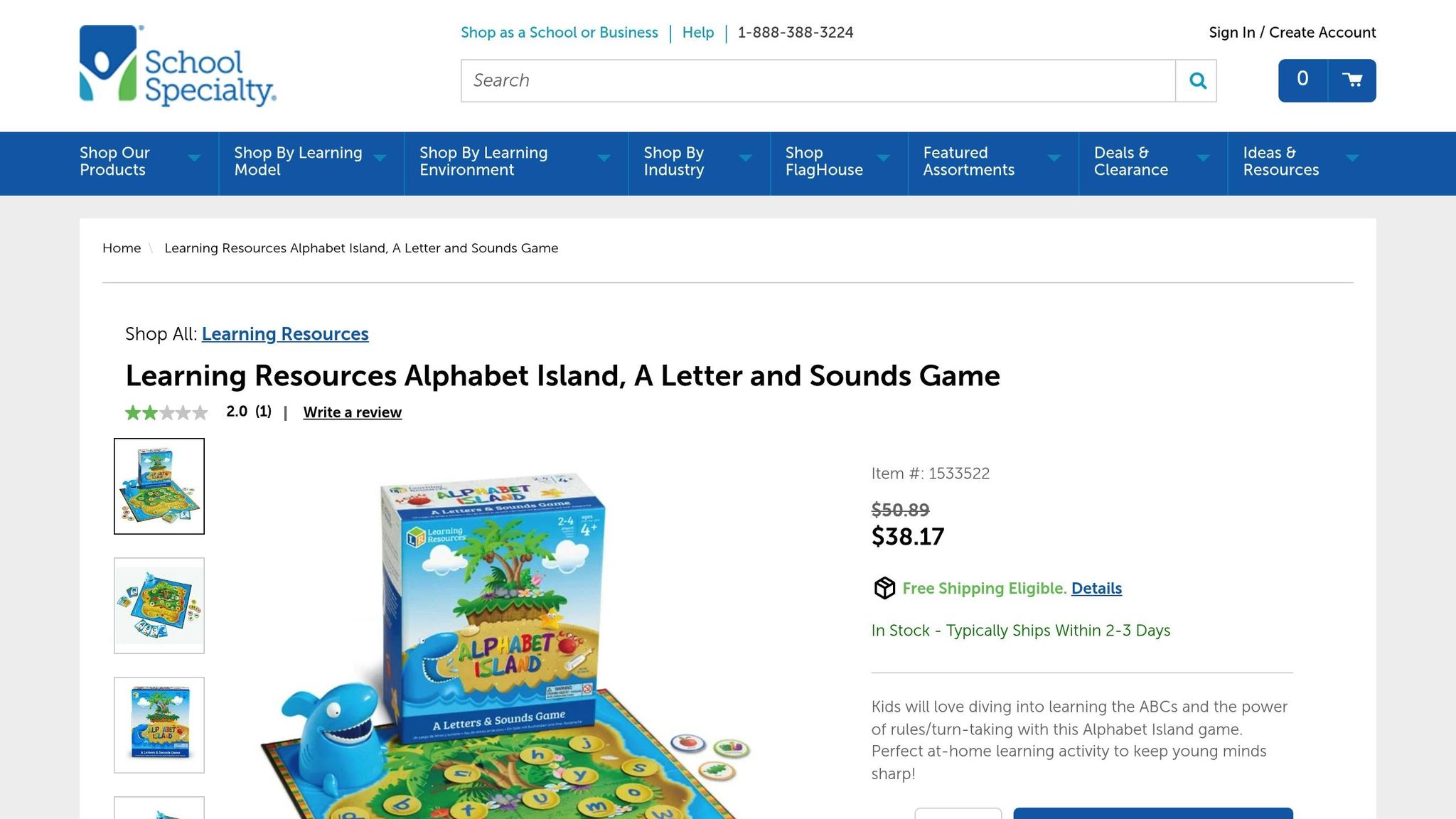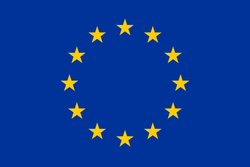Discover the Best Board Games for Every Player

Sequence Letters vs Alphabet Island: Which Game Wins?
Choosing between Sequence Letters and Alphabet Island depends on your child’s learning needs and reading level. Here’s a quick breakdown:
- Sequence Letters: Best for ages 4-7, focusing on letter recognition, strategy, and visual sequencing. It’s a short, fun game with simple rules and competitive play.
- Alphabet Island: Ideal for kids 4+ who need a more structured phonics approach. It offers multi-level gameplay, teaching letter sounds, spelling, and even writing skills with engaging elements like a 3D shark figurine.
Quick Comparison
| Feature | Sequence Letters | Alphabet Island |
|---|---|---|
| Age Range | 4-7 years | 4+ years |
| Focus | Letter recognition, strategy | Phonics, letter sounds, handwriting |
| Game Components | Board, cards, chips | Board, token discs, 3D shark |
| Learning Levels | Single level | Multi-level (K–3rd grade) |
| Game Style | Strategic board game | Interactive adventure |
For a beginner-friendly introduction to letters, go with Sequence Letters. If you’re looking for a game that grows with your child, Alphabet Island is the better option.
How To Play Sequence Letters

Game Features: Sequence Letters vs Alphabet Island

How Sequence Letters Works
Sequence Letters introduces a fun, strategic way to learn letters by using a card-matching system. The game includes a foldable board with pictures that correspond to letters, 52 playing cards (two for each letter), and 90 colored chips divided into three sets of 30. Players aim to align four chips in a row by matching the letters on their cards with the pictures on the board. To keep things interesting, the game includes special action cards: “X” cards let you remove an opponent’s chip, while “Z” cards act as wildcards, letting you place a chip on any open space.
How Alphabet Island Works
Alphabet Island takes a different approach, combining tactile and visual elements. It features a board with both upper- and lowercase letters, token discs, and a 3D shark figurine for added fun. Players match upper- and lowercase letters while collecting coins. The token discs are double-sided, allowing kids to flip lowercase letters to reveal picture words, which helps with recognizing beginning sounds. Adding a twist, pulling a shark card means losing a letter, injecting some suspense into the game.
Feature Comparison Chart
| Feature | Sequence Letters | Alphabet Island |
|---|---|---|
| Player Count | 2-4 players | 2-4 players |
| Age Range | Ages 4-7 | Ages 4+ |
| Core Components | - Foldable game board - 52 letter cards - 90 colored chips |
- Game board - Token discs - 3D shark figurine |
| Learning Focus | - Letter recognition - Picture-letter matching - Strategic thinking |
- Upper/lowercase matching - Beginning sounds - Phonics practice |
| Special Features | - “X” cards for removing chips - “Z” wildcard cards |
- Double-sided token discs - Shark card suspense |
| Game Progression | Single difficulty level | Multiple levels (K–3rd grade) |
Each game brings something different to the table. Sequence Letters focuses on building sequences and strategy, while Alphabet Island emphasizes phonics and sound recognition with its multi-level gameplay.
sbb-itb-1ed942f
Learning Benefits
Learning with Sequence Letters
Sequence Letters helps children develop pre-reading skills through activities focused on visual sequencing and memory. Its left-to-right copy-and-recall method strengthens letter recognition and sequential thinking. This method contrasts with Alphabet Island, which provides a more comprehensive learning experience.
Learning with Alphabet Island
Alphabet Island combines phonics with hands-on writing exercises, creating a multi-sensory learning environment. Students can progress from mastering 230 words in Level 1 to over 4,000 words in Level 2. The program uses engaging characters and stories, such as Clever "C" explaining the /s/ and /k/ sounds, to make complex ideas easier to understand.
Learning Benefits Chart
| Learning Aspect | Sequence Letters | Alphabet Island |
|---|---|---|
| Primary Focus | Visual sequencing and memory skills | Phonics and letter-sound correspondence |
| Skill Development | Letter sequence recognition, left-to-right progression | Letter formation, sound-letter associations, spelling mastery |
| Teaching Method | Copy-and-recall sequences | Multi-sensory approach with stories and characters |
| Progress Tracking | - | Progressive levels (K through 3rd grade) |
| Writing Skills | - | Comprehensive handwriting support |
| Vocabulary Building | - | 230+ words in Level 1, 4000+ words in Level 2 |
Studies show that practicing handwriting during preschool years plays a key role in improving language skills, literacy, and motor development. Alphabet Island and Sequence Letters each contribute uniquely - Alphabet Island emphasizes structured learning in writing and spelling, while Sequence Letters focuses on visual and sequential skills critical for reading.
How Fun Are These Games?
Playing Sequence Letters
Sequence Letters turns learning letters into a fun, strategic game for kids aged 4–7. By combining matching mechanics with gameplay, it helps kids recognize letters while having a good time.
Here’s what makes it entertaining:
- Combines strategy with colored chips, matching cards, and wild cards (like X and Z) for unpredictable twists.
- Uses colored squares as visual aids to support letter recognition.
- Encourages friendly competition with a format designed for 2–4 players to create sequences.
On the other hand, Alphabet Island takes a more adventurous route to make learning engaging.
Playing Alphabet Island
Alphabet Island creates an exciting sea-themed adventure to teach letters. Its standout feature? A 3D shark figurine that adds a sense of thrill.
What makes it fun:
- Challenges players to match uppercase and lowercase letters dynamically.
- Introduces a coin collection system for added motivation.
- Includes shark-themed moments to keep players on their toes.
This adventurous gameplay aligns with its learning-focused design.
Fun Factor Comparison
Both games mix fun and learning in their own way. Here’s a quick comparison of their entertainment features:
| Entertainment Aspect | Sequence Letters | Alphabet Island |
|---|---|---|
| Game Style | Strategic board game | Interactive adventure |
| Engagement Elements | Wild cards, chip placement | 3D shark figurine, coin collection |
| Player Interaction | Competitive 2–4 player format | Turn-based letter matching |
| Visual Appeal | Colored squares and picture matching | Sea-themed environment |
| Challenge Level | Builds difficulty through strategy | Gradual letter-learning progression |
While Sequence Letters thrives on strategy and competition, Alphabet Island captivates with its adventurous, interactive gameplay. Both offer unique ways to make learning letters exciting.
Conclusion
Best Game Pick
The right game depends on your child's literacy level and specific learning needs.
- Sequence Letters provides a straightforward way to introduce letter recognition.
- Alphabet Island offers a step-by-step phonics curriculum, starting with basic letter sounds and progressing to more advanced phonetics.
For beginners, Sequence Letters is a great starting point. If you're looking for a game that grows with your child, Alphabet Island is a solid choice. Each game caters to different stages of learning.
More Letter Learning Games
Looking for more options to expand your child's learning experience? Check out these alternatives:
- Letter Lattice: A game where players change one letter at a time to transform one word into another. It strengthens vocabulary and problem-solving skills.
- Alphabetor: A fast-paced game that challenges players to quickly pick the next letter in sequence, helping reinforce letter order and improve fluency.
Brain Games offers these and other letter-focused activities to create a comprehensive learning experience. Mixing different games can address various learning styles and support multiple aspects of literacy development.
The right game can make a big difference in building literacy skills. Explore these options to find the best fit for your learner!






